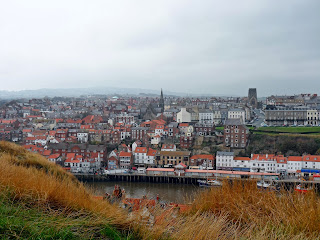(price One Penny)
Thursday 25 January 1877
LOCAL AND DISTRICT NEWS
GUISBOROUGH
MARRIAGE OF MR J W CLARKE. -
The bells of the Parish Church rang merrily last Thursday in celebration of the wedding of Mr J W Clarke, agent to Admiral Chaloner, and Miss Marjorie Gow, daughter of Mr Gow, agent to Sir Walter Trevelyan, Northumberland. The marriage took place at St George's Chapel, Hanover-square, London.
................................
STOCKTON
NIGHT TURNED TO DAY AT TEES-SIDE IRONWORKS.
A scientific novelty has been brought to the aid of our local industry. A few evenings ago, passengers by the Quayside at Stockton or over the bridge may have been a little startled by the perception of a brilliant light located on the southern side of the river. It was not like a flare, nor the glare of a furnace; and gas, or any ordinary illuminator, was out of the question.
It was the novelty of which I have spoken. Messrs Head and Wrightson having a pressure of work on hand, and short days to do it in, bethought them of the beautiful expedient by which Messrs Hopkins, Gilkes and Co. have turned night into day for convenience in the building of Tay Bridge.
This they have done by the use of two of Gramme's electro-magnetic machines, which are fixed in a building close to the foundry engine and driven from it. The electric current so generated is conveyed through insulated wires to two of Serrin's lamps, which are fixed in sentry boxes on the top of the hill overlooking the works. Each of the lamps gives the light of a thousand candles, which is cast by a parbolic [sic] reflector in the direction required.
Work proceeds in the night almost as freely as in the daytime; and the range of the illumination may be judeged of by the fact that in the hours of darkness the time can be read on a watch two miles away from the lamps. On a smaller scale, Messrs Head and Wrightson have called into requisition the electric light. They are perfectly satisfied, I understand, with their experimental lighting up on the occasion mentioned, though the important adjunt, a reflector, was wanting; and I believe it is their intention to perfect the apparatus for ordinary use. I expect the example will be widely followed. - "Local Gossip," South Durham and Cleveland Mercury

.JPG)
.JPG)

.JPG)






























.jpg)




